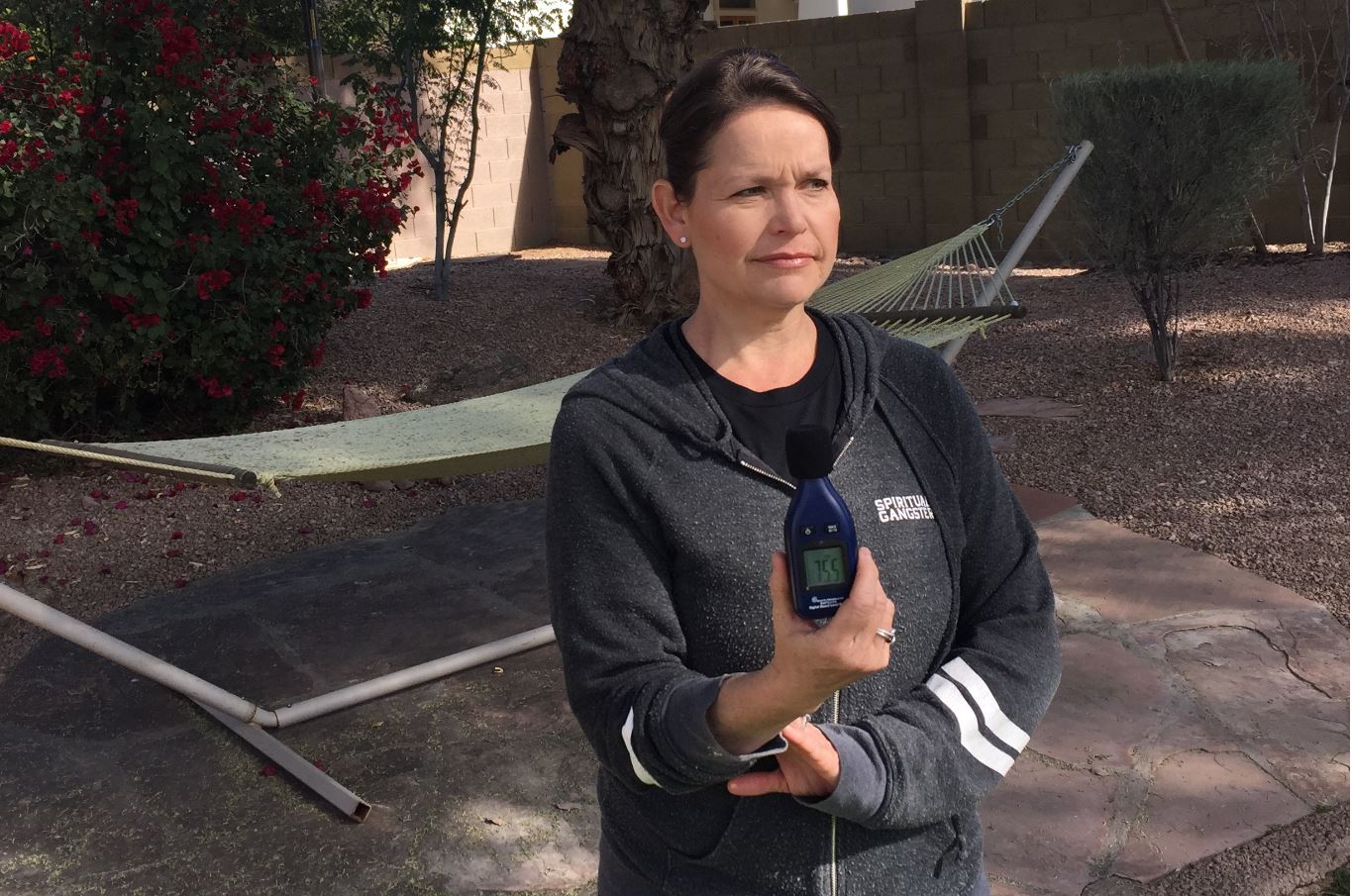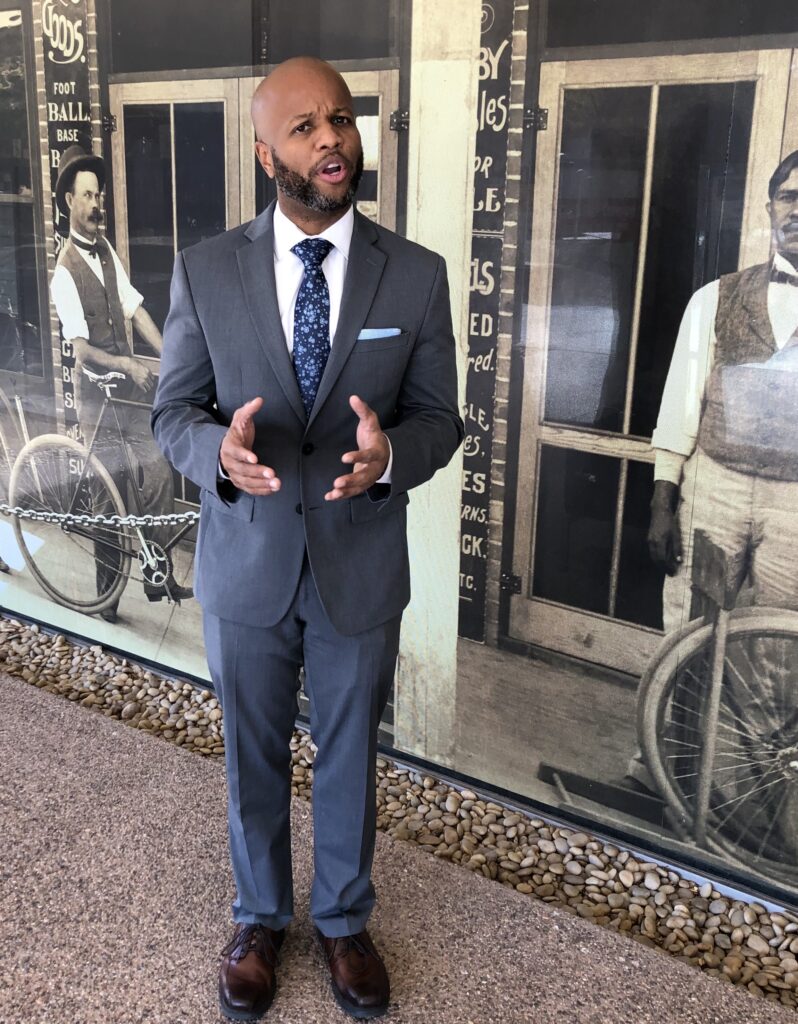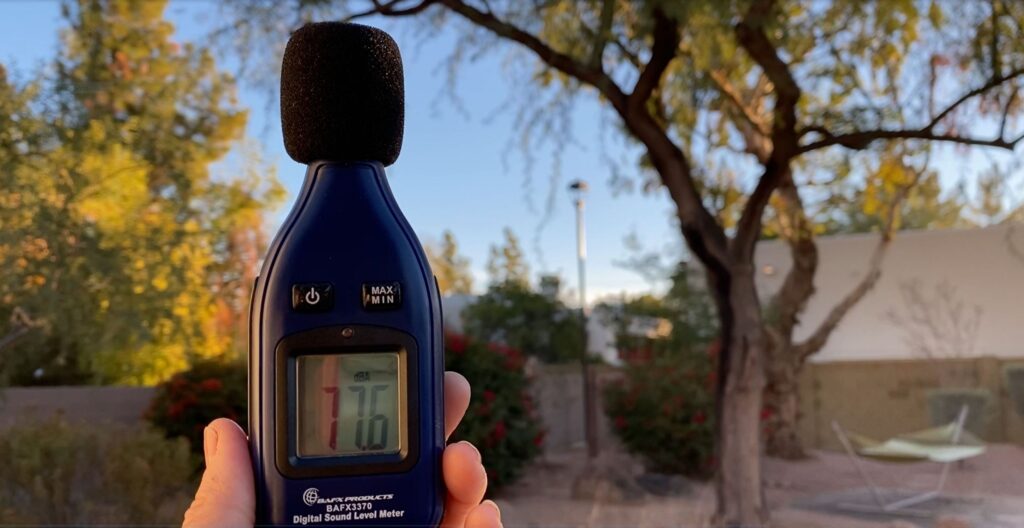Tempe Mayor Woods puts issue on Wednesday MAG agenda after nearly 200 complaints about diamond-grinding finish that replaced rubberized asphalt

Perhaps the only thing louder than the roar of traffic along recently widened Loop 101/Price Freeway through Tempe and Chandler is the uproar from residents living within a half mile of the din.
“It’s been wicked loud,” said Nancy Herbst, whose custom home is in Round Valley Estates on the southwestern side of Loop 101 and Guadalupe Road. “It’s like living in a Motel 6 on the side of a freeway.”

It’s so bad that the Herbsts have stuffed eggcrate foam between the window and the plantation shutters in their bedroom.
“It helped, but now we can’t look out the window,” Herbst said.
She’s not alone in her grief.
Lisa Zyriek, who lives in The Oasis near Price and Elliot roads, about a half mile west of Loop 101, said that when rush hour starts at about 4:30 a.m., “you would think that those cars are right on the road outside.”
“Now we wear earplugs,” Zyriek said. “We also have what we call a white-noise machine that we bought at Bed Bath and Beyond so we can choose the sound that we’d like it to make to drown out the traffic. That kind of helps us. We don’t need to be up at 4:30.”
The Zyrieks recently paid for additional insulation in their attic, hoping to reduce incoming noise.

And in Circle G Ranches, Stacey Sell is beyond torqued that she has lost the enjoyment of her backyard, where she likes to garden and lounge on her hammock. She sent Wrangler News a 70-second video in which she holds a decibel reader. The lowest reading during the video is 73 decibels. The highest is 77.6. The maximum nationally acceptable level is 67 decibels.
Residents from no fewer than 12 Tempe and Chandler neighborhoods have complained on nextdoor.com about noise from the widened freeway.
When Arizona Department of Transportation added a lane in each direction last year from Baseline Road south to Loop 202, neighbors assumed that the freeway once again would be topped with a 1-inch layer of noise-mitigating rubberized asphalt. It was on Loop 101 before construction and it is the topping on nearly all freeways in metro Phoenix.
Instead, ADOT, in partnership with the Maricopa Association of Governments, which is the Phoenix region’s freeway planning agency, finished the Loop 101 project with a noise-mitigation technique known as diamond grinding, in which specialized machines with diamond-tipped blades on rotating drums remove a thin layer of concrete roadway while creating small grooves to limit vehicle tire noise. It is a 3-year pilot program.
Diamond grinding is less expensive than rubberized asphalt, which begins to break down after three years and typically must be replaced at about the 10-year mark.
Diamond grinding is not quite as quiet, though. ADOT acknowledges that, but claims that Loop 101 still is below the noise-abatement threshold in its policies and in federal noise-abatement requirements.
Nearby residents, armed with their own hand-held decibel readers, beg to differ.
Tempe Mayor Corey Woods and Chandler Mayor Kevin Hartke said that their offices have been swamped with complaints about noise from Loop 101.
Woods, who is a member of the Maricopa Association of Governments Transportation Policy Committee, has placed the issue on the agenda for MAG’s next meeting on Wednesday, Jan. 20.

“I specifically asked, as mayor of the city, to bring this in front of all the people who are going to be involved in that MAG meeting,” Woods said. “I also have a pre-meeting with the executive director of MAG to talk about some of the issues that our residents have been experiencing in terms of additional noise on the freeway and therefore diminished quality of life, which could also lead to diminished property values.
“Diamond grinding was initially deemed as a pilot program, but from my understanding, the pilot program was going to last three to four years. What I try to impress upon them in conversations that I’ve had with MAG staff and ADOT staff is that our residents can’t afford to wait three to four years to come back to revisit this issue. It really is negatively affecting their quality of life.”
Woods said that he has received nearly 200 emails and other forms of correspondence on the issue.
According to Hartke, “We have received complaints of increased noise from residents that live along Loop 101. The majority of the communications have been from Tempe residents who are writing to both Tempe and Chandler officials, although Chandler residents are sending emails, as well. We have reached out to ADOT.”
ADOT explained in an emailed response that it is experimenting with diamond grinding as it researches various pavement surfaces, life-cycle costs and efforts to limit noise along regional freeways.
A majority of the region’s freeway system that is covered with rubberized asphalt is now beyond its anticipated 10-year service life. As a result, ADOT and MAG have faced decisions about long-term costs associated with pavement wear over time, including whether to resurface a freeway with rubberized asphalt or use an alternative surface treatment, such as diamond grinding, which provides a longer-lasting solution.
“As rubberized asphalt ages and wears down, noise levels associated with highway traffic increase,” ADOT said. “However, noise levels have not been shown to increase over time on freeways treated with diamond grinding. All noise-mitigation efforts for (the Loop 101) project have been implemented and meet ADOT and federal noise-abatement requirements.”

In response to noise complaints about Loop 101’s diamond-grinding surface, ADOT said that its analysis of the new treatment included noise testing in early October 2020 along Loop 101/Price Freeway between U.S. 60 and Loop 202/Santan Freeway.
Noise readings were taken in neighborhoods adjacent to Loop 101, according to ADOT. Those readings ranged from 50 to 65 decibels, which is acceptable based on its Noise Abatement Policy and federal requirements. ADOT added that the readings were comparable to previous readings taken along Loop 101 in 2013 when rubberized asphalt was in place.
“Subsequently, at the request of individual homeowners, ADOT conducted noise readings in those homeowners’ backyards in early December during peak morning and evening traffic hours to verify the accuracy of the previous readings,” ADOT said. “Those readings were primarily taken in the Optimist Park neighborhood on the west side of Loop 101 between Baseline and Guadalupe roads, as well as on the east side of Loop 101 just south of Guadalupe Road.
“It’s important to note ADOT is not allowed to include the noise-reduction benefits of pavement surface treatments – including diamond grinding or rubberized asphalt – as part of the noise-mitigation measures for a project.”
ADOT said that it has responded to all homeowners who have reached out about noise and provided information about the diamond-grinding program and results of its analysis of its noise readings. ADOT added that it performed courtesy noise measurements at homes in proximity to the freeway at the homeowners’ request.
“ADOT can minimize noise levels, but we are not able to eliminate all noise for those living in proximity to the freeway,” it said in its email to Wrangler News. “While residents are hearing some freeway noise, it does not exceed levels that would require consideration of additional noise-abatement measures according to ADOT’s policy and federal guidelines.”
The neighbors aren’t buying it.
“The noise just kept getting louder and louder, so I reached out to ADOT and asked when the project will be finished. They said the project is finished,” said Zyriek, 56, a financial analyst before becoming a stay-at-home mom. “That’s the first time I became aware that they were moving away from rubberized asphalt. They basically said that it was a cost and maintenance issue.
“Rubberized asphalt is not a failed product. We had no issues with it. They’re just looking for something that’s more cost effective.”
The Zyrieks have a two-story home. All of the bedrooms are upstairs.
“For us, the biggest impact definitely is sleeping. We feel we can’t wait for three years for things to get better,” she said. “They need to have some public meetings. There was no outreach. This kind of came out of the blue. As more traffic comes because of more lanes and after the pandemic ends and things return to normal there will be even more traffic.”

Herbst, a dog walker and marathon runner, said it is difficult to have a conversation outside her home with a neighbor because of freeway noise.
“Have they thought about sound-barrier walls? How about growing some trees?” said Herbst, 66, an artist. “One neighbor was complaining that his house looked like a bunker because of all the sound buffering that he has put into it.
“The backyard ambiance is gone in the mornings and at night, especially on weekend nights, by our pool. We’ve lived here since 1992 when there was no freeway. We knew it was coming. We thought at the time that the benefits outweighed the negatives, and, boy, did it help with getting the kids around. We were happy when the freeway came and twice as happy when they rubberized it. Now it’s unbearably loud. When my husband is at the kitchen table and I’m at the island, we have to raise our voices to have a conversation.”
Sell, 49, chief financial officer of a Tempe travel agency and a Circle G homeowners association board member, said that she has to sleep with “a very loud fan” on to create white noise to drown out freeway traffic. She was so irked last fall that she and her husband created and distributed nearly 200 fliers urging homeowners to join them in heightening awareness of the problem to MAG, ADOT and the municipalities.

“I’m not saying the freeway shouldn’t make noise. It’s going to make noise. That’s a given,” Sell said. “But the level of noise now is so significantly higher than it used to be that we are not able to enjoy our yards. I was having a conversation with a neighbor in our cul de sac. He couldn’t hear me unless I was literally screaming. That’s unacceptable. That is what we are upset about.”



It is ridiculous at 101 and 16th Street, as well. There is apparently a metal plate that is laid across the bridge for the 16th Street underpass. It sounds like 2 BOOMS everytime a truck runs over it. Without exaggeration, it shakes the windows of our home. This goes on 24/7.
I can’t believe that the 101 between Pima Rd and the I-17 will remain unsaved as is. I drive this every day, and not only does it look terrible, but it’s impossible to see the lines on the road with sun glare. The road looks like it is unfinished. Let’s fix it and get it right or all of our Arizona streets will eventually look like this.